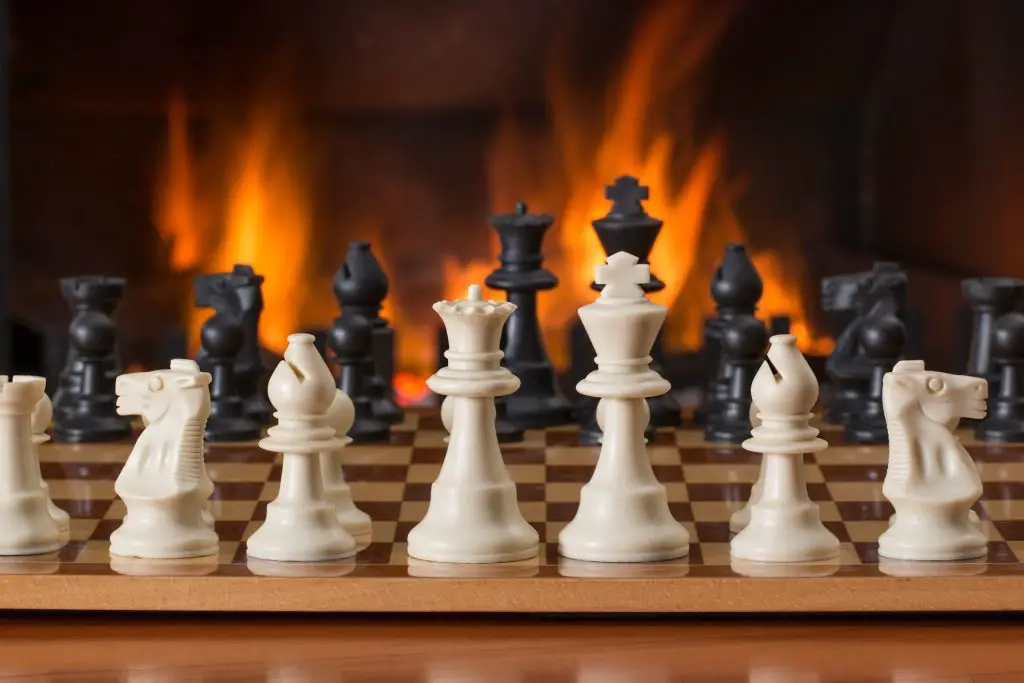Tie Breaker Games play a crucial role in competitive scenarios, offering a means to determine a clear winner when participants or teams find themselves deadlocked. Tiebreakers serve as decisive showdowns in these situations, employing specific rules and formats tailored to each context. Whether in sports tournaments, intellectual competitions, or even political elections, tiebreaker games hold immense significance in resolving ties and determining the ultimate victor.
The importance of tiebreaker games cannot be overstated. They serve multiple purposes, including:
- Determining a Clear Winner: Tiebreaker games exist to establish a definitive victor. In competitive scenarios where participants or teams have similar performances or scores, tiebreakers provide a platform to showcase skills, abilities, and strategies, ultimately crowning the undisputed winner.
- Ensuring Fairness: Tiebreakers are designed to uphold fairness and integrity in competitive environments. They prevent outcomes from being left to chance or arbitrary factors by introducing structured mechanisms that allow participants to compete head-to-head, thus reducing the possibility of biases or unfair advantages.
- Heightening Excitement: Tiebreaker games inject additional excitement into competitions, captivating participants and audiences alike. These high-stakes showdowns often bring out the best performances as participants strive to outperform their opponents in the quest for victory.
- Testing Mental and Physical Abilities: Tiebreaker games allow testing of participants’ mental and physical abilities under pressure. Whether it’s quick decision-making, strategic thinking, adaptability, or endurance, tiebreakers challenge individuals to showcase their skills in intense situations.
- Resolving Standings and Advancements: Tiebreakers play a crucial role in determining standings and advancements in various formats, such as sports tournaments or multi-stage competitions. By breaking ties, they establish clear hierarchies, allowing deserving participants or teams to progress to subsequent rounds or stages.

Tie Breaker Games in Sports
Sports tournaments often encounter tiebreaker situations when two or more teams or individuals finish with the same score or standing. These tiebreakers are implemented to determine which team or individual advances to the next round, claims the championship, or secures a higher position in the tournament. Tiebreaker games add an extra level of excitement and drama, intensifying the competition and providing a clear outcome.
Various sports incorporate specific tiebreaker games or mechanisms to resolve tied matches or standings. Here are some examples of tiebreaker games used in different sports:
- Soccer: Tiebreaker games are commonly employed during knockout stages or to determine winners in group stages. If a match ends in a tie, extra time is often played, consisting of two additional 15-minute halves. If the tie persists, a penalty shootout is conducted, where each team takes turns kicking penalties until a winner emerges.
- Tennis: In tennis, tiebreaker games are used to decide sets that reach a certain score threshold, usually 6-6. A tiebreaker game follows specific rules, such as the first player or team to reach seven points (with a two-point lead) winning the tiebreaker. This helps determine the outcome of the set and, ultimately, the match.
- Basketball: Basketball tiebreaker games are primarily utilized in tournament settings or to determine playoff seeding. In case of a tie between teams, various tiebreaker criteria come into play, such as head-to-head record, point differential, or performance against common opponents. These criteria help establish the ranking and determine which team advances.
- Ice Hockey: Tiebreaker games in ice hockey often occur during the playoffs or to determine playoff qualification. If a game ends in a tie after regulation time, an overtime period is played, typically lasting 5 minutes. If no team scores during this period, a shootout follows, with each team taking turns in attempting penalty shots to decide the winner.
The formats and rules for tiebreaker games in sports vary depending on the sport and tournament structure. Sports governing bodies or tournament organizers outline specific guidelines. Some tiebreaker formats include additional time, penalty shootouts, or modified scoring systems to break ties. These rules ensure fairness and provide a definitive outcome in competitive sports scenarios.
It’s important to note that tiebreaker formats and rules may evolve over time, with adjustments made by sports organizations to enhance the competition and maintain fairness.

Tie Breaker Games in Competitive Activities
Chess tournaments often encounter situations where players have the same number of points. To determine a winner, tiebreaker games are employed. Common tiebreaker methods in chess include:
- Head-to-Head Results: If two or more players have the same score, their results against each other are considered. The player with a better head-to-head record is declared the winner.
- Performance Rating: Performance rating is a statistical measure that evaluates a player’s performance throughout the tournament. In tiebreaker scenarios, performance ratings are compared, with the player achieving a higher rating being declared the winner.
- Playoff Matches: In some cases, tiebreakers in chess tournaments involve additional matches between the tied players. These playoff matches can be in the form of rapid chess, blitz chess, or even Armageddon games, where the players compete under time constraints to determine a clear winner.
Quiz or trivia competitions often utilize tiebreaker games to determine a winner when multiple participants or teams have the same score. Common tiebreaker methods in these competitions include:
- Additional Questions: An extra question, typically more challenging, is posed to the tied participants or teams. The first to provide the correct answer is declared the winner.
- Fastest Response Time: In some cases, tiebreakers are determined by the fastest response time to a question. Participants use signaling devices or buzzers, and the quickest to provide the correct answer wins the tiebreaker.
Furthermore, Debates or speech contests may employ tiebreaker games to determine winners when participants receive the same scores or evaluations. Tiebreaker methods in these contests can include:
- Impromptu Rounds: Additional impromptu rounds may be conducted, giving participants an opportunity to demonstrate their ability to think on their feet. These rounds provide a fresh perspective and help differentiate between tied participants.
- Rebuttal Showdown: In some cases, tiebreakers involve a specific rebuttal round, where participants present arguments and counterarguments on a given topic. The judges evaluate their performance in this tiebreaker round to determine the winner.
In the realm of gaming competitions, tiebreaker games are commonly used to determine a winner when players or teams have the same score. These tiebreakers can vary depending on the game and competition format. Examples include:
- Sudden Death Matches: A sudden death match may be played in games where players compete head-to-head. The tied participants or teams face off in an intense final match, with the winner progressing or claiming victory.
- Time Trials: In racing games or speedrun competitions, tiebreakers can involve time trials. Participants compete to achieve the fastest time on a specific course or level, with the quickest time determining the winner.
It’s worth noting that tiebreaker methods in competitive activities can differ depending on the specific rules and regulations set by the organizing bodies or event organizers. These methods are implemented to ensure a fair and decisive outcome in tie situations, allowing for a clear winner to emerge.
Conclusion
Tiebreaker games play a significant role in various competitive scenarios, including sports, elections, quizzes, and debates. They serve as crucial mechanisms for determining winners, breaking deadlocks, and upholding the principles of fairness and equity. Tiebreaker games ensure that a clear and decisive outcome is achieved, preventing inconclusive results and enabling effective governance or progression to the next stage of a competition.

Throughout this article, we have explored the importance and purpose of tiebreaker games. We have discussed how tiebreakers are utilized in different sports, competitive activities, and electoral processes. We have also examined the strategies and techniques employed in tiebreaker games, as well as the controversies, criticisms, and proposed alternatives surrounding them.
While tiebreaker games may face criticisms and controversies, particularly concerning fairness and biases, they remain an integral part of competitive scenarios. Efforts are continually made to refine tiebreaker rules and procedures, taking into account feedback and suggestions from participants, organizers, and stakeholders. The goal is to strike a balance between maintaining fairness, preserving the integrity of the competition, and ensuring a definitive outcome.
In the world of competitive activities, tiebreaker games are not just moments of tension and excitement; they serve as crucial decision points that determine winners, shape the course of events, and highlight the skills and abilities of the participants. They embody the spirit of competition, challenging individuals and teams to perform their best under pressure and providing opportunities for growth, resilience, and success.
As the world of competition continues to evolve, the role of tiebreakers will remain essential, fostering intense rivalries and unforgettable moments and ultimately delivering deserving winners. Whether it’s a penalty shootout in soccer, a sudden-death round in a quiz, or a recount in an election, tiebreaker games are here to stay, ensuring that competitive scenarios yield clear outcomes and leave a lasting impact on participants and spectators alike.
Want to know about Tiny Epic Dungeons controversies? Read it here.





